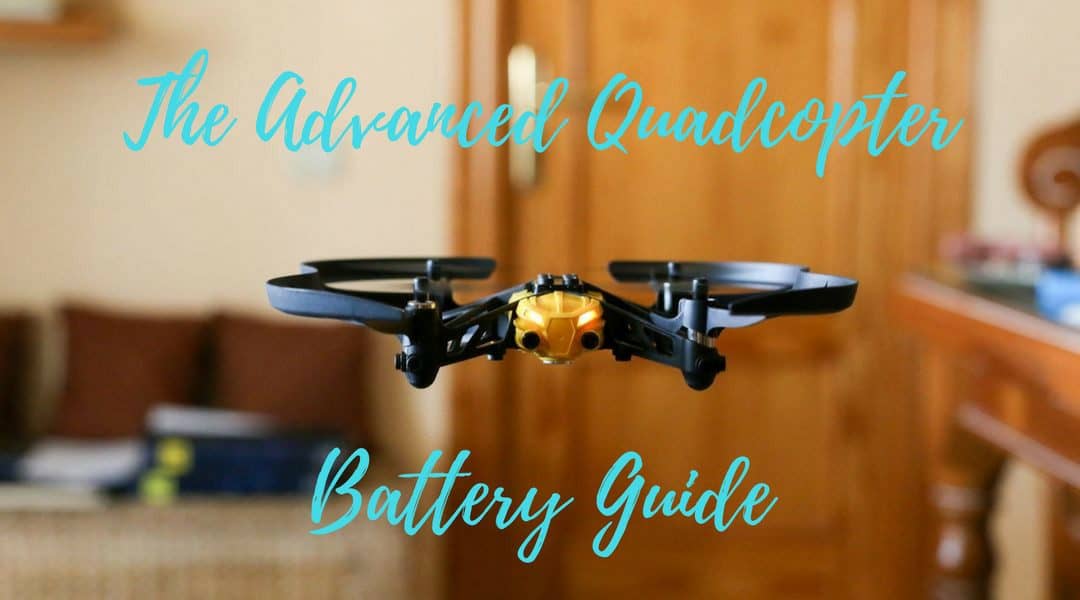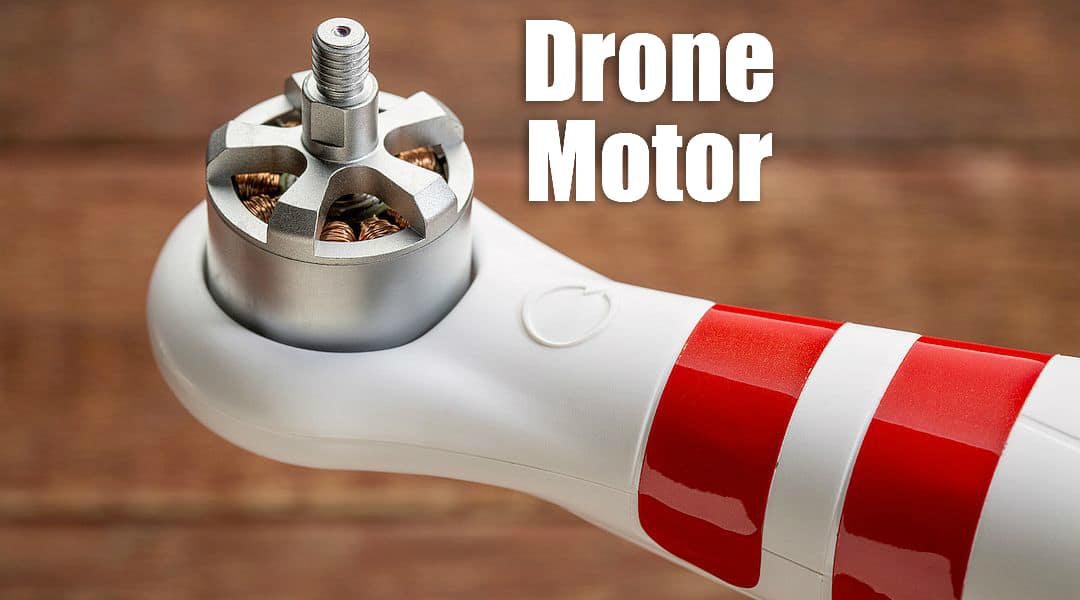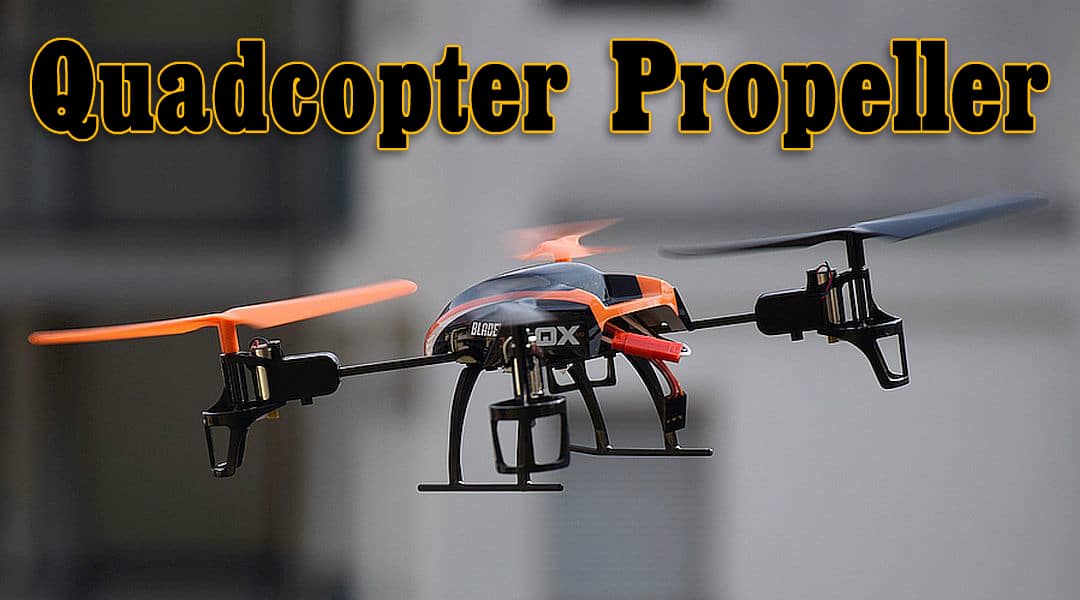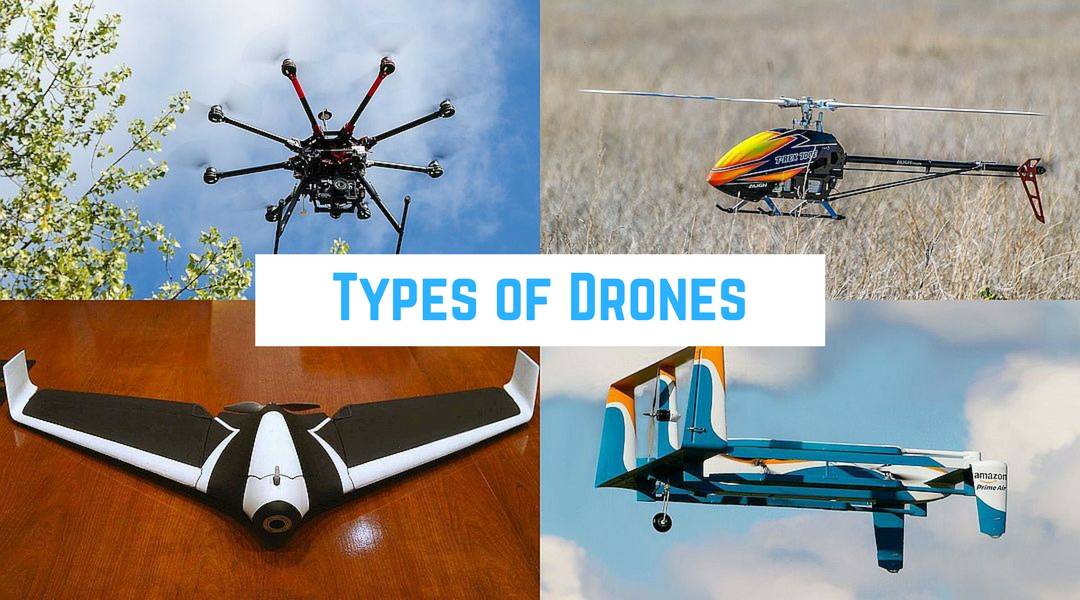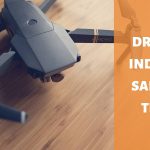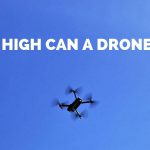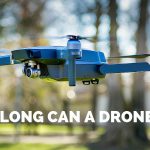Table of Contents
- Quadcopter Battery Guide Introduction
- Lithium Polymer Batteries
- Quadcopter Battery Voltage and Cell Count
- Quadcopter Battery Capacity
- Quadcopter Battery C Rating
- Battery Charging
- Quadcopter Battery Storage
- Charge Balancing vs Charging
- Computerized Battery Chargers
- Quadcopter Battery Safety Rules
- Quadcopter Battery Guide Introduction
Quadcopter Battery Guide Introduction
Your quadcopter battery is the power source that drives all the systems on your drone and allows it to fly. Like gas in a car, once you run out of power, you are not going anywhere. When you first start flying quadcopter, you have a basic understanding of how a quadcopter battery works. You plug a few batteries into the provided USB cables, and plug them in to charge. When the LED lights on the quadcopter start blinking, you know that you need to land, and swap out the battery. You also have a rough idea of how long you can fly on one battery charge.
As you gain more experience, and move onto drones in a higher price bracket, your knowledge of quadcopter batteries and chargers needs to improve. After all, you have made an investment into a drone with more features and functionality. It is only fitting that you are more aware of a quadcopter battery operates.
Lithium Polymer Batteries
Lithium polymer batteries are modern batteries that are commonly used in consumer electronics such as your smartphone, laptops, and tablets.
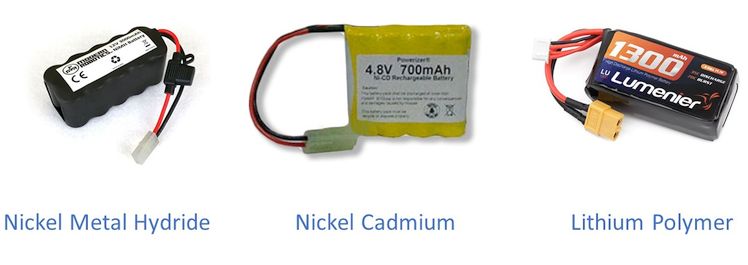
Quadcopter Battery Types
The two main possible alternatives to LiPo batteries are Nickel Metal Hydride (NiMH) and Nickel Cadmium (NiCd) batteries. LiPo (lithium polymer) batteries offer significant advantages over other types of batteries. The advantages that LiPo batteries offer over NiCd and NiMH batteries are:
- LiPo batteries have higher capacities which allows them to hold more power
- LiPo batteries have higher discharge rates allowing faster power transfer
- LiPo batteries are lighter and can be made in different shapes and sizes
However, LiPo batteries also have some drawbacks. These include:
- LiPo batteries have a shorter lifespan of about 300 to 400 cycles, as compared to NiMH and NiCd batteries
- If the battery gets punctured and vents into the air, there is a possibility that this could result in a fire
- Some extra care needs to be taken when charging, discharging, or storing LiPo batteries
Quadcopter Battery Voltage and Cell Count
A single LiPo cell has a nominal voltage of 3.7V. To clarify, the nominal voltage is approximately the average of the full charge of 4.2V/cell, and the minimum safe charge of 3.0 V/cell. For the mathematically inclined reader, you will notice that 3.7V/cell is not really the average of those two values, but this is what the battery industry uses as a nominal value.
Nominal LiPo Battery Voltage = 3.7 V / cell
The total voltage of a battery is determined by the number of cells. To calculate the total voltage, you take the number of cells in series, and multiply by 3.7V. So a 2S battery pack will have 2 cells in series, so its total voltage is 2 x 3.7 = 7.4V. A 3S battery has three cells in series, so its voltage is 11.1V.
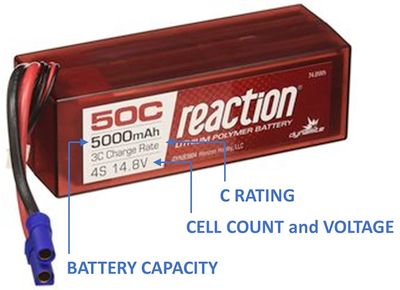
The voltage of a quadcopter battery pack will determine how fast your propellers spin. Brushless motors have a rating designated in units of kV, which effectively means RPM per volt. So the more voltage you have available, the higher the maximum RPM of your quadcopter’s propellers. This can result in more dynamic agility, and faster speeds.
Quadcopter Battery Capacity
The battery capacity represents how much power the battery can hold. You can think of this as being the size of your fuel tank. The higher the capacity, the longer you can fly your quadcopter. Battery capacity is measured in units of milliamp hours mAh. If you have a battery with a capacity of X mAh, and you drain X mA, then it will take one hour to drain the battery.
Voltage is used to measure the charge of a battery because measuring battery capacity is difficult. The amount of energy going into the battery can be measured, but not how much is actually in the battery.
Before you even think about getting a larger battery for your quadcopter, there are some downsides to batteries with higher capacities. As the battery capacity goes up, so does its physics size, and weight. The extra flying time that you gain from a larger capacity, may be negated by the extra weight. This is also assuming the larger battery will fit in the drone battery compartment.
The higher capacity battery could also damage your quadcopter. There will be additional heat buildup in the speed control and the motors which could damage these components.
You may come across a LiPo battery that has the designation of the form xSyP. The xS section represents the number of cells in a string, as was previously mentioned. The yP portion of the designation is the number of parallel strings in the battery. Adding strings in parallel is done to increase the battery capacity.
Quadcopter Battery C Rating
The C rating of a LiPo battery is a measure of the safe and continuous maximum discharge current.
Maximum Discharge Current = C-Rating x Capacity
For a 1200 mAh 50C battery has an estimated discharge current of 60A.
Some batteries come with continuous C rating and higher burst C rating. The burst rating is only applicable for short periods of time, such as 10 seconds, and not continuous. The burst rating would be used in the case where you are accelerating your drone, but not when it is at steady flight speed.
If the C rating is lower than what your quadcopter needs, the battery will not be able to deliver the current that the motors needs. You will see a sluggish performance since your quadcopter is under powered. Also, you will be degrading your quadcopter battery at a faster rate than normal. There is also a chance the battery could burst into flames. Do not use an undersized batter.
Having a C rating higher than what your quadcopter needs sounds great, but you will not see any added benefit or performance. All you will be doing is flying with an oversized battery, that will end up reducing your quadcopter’s performance.
Battery Charging
The nominal voltage refers to a half-full cell. Never use your battery to drain it below 3.3 Volts per cell. Programmable ESC’s (electronic speed controllers) can be set for a soft cutoff at this voltage. A LiPo battery drained down to 3.0 Volts is considered completely empty and may not be salvageable. The same applies to overcharging. A battery is full when the cells are charged to 4.2 Volts. Charing past this voltage may become dangerous and be a fire hazard.
As a rule of thumb, only charge your battery at a 1C charge rate or less unless the battery manufacturer states that it can be charged at a higher rate.
Unless specified otherwise, only charge the battery at a 1C charge rate, or 1 x battery capacity in Amps.
Charging your LiPo battery at a lower rate and, never fully discharging nor overcharging it will greatly increase your battery lifespan. Taking these simple precautions will get you at least 300 charge cycles on your battery.
Quadcopter Battery Storage
Keeping a fully charged LiPo battery is fine for a few days. However, beyond a week, gases might build-up inside the cells and damage your battery. Therefore, if you are not going to be using your LiPo batter for longer than a week, you need to prepare it for storage.
Discharge or charge your batteries for storage at a voltage level of 3.7 to 3.85 volts per cell.
The proper storage voltage for a LiPo battery is 3.8V per cell
Computerized chargers have a storage function built-in that will charge or discharge you battery cells to the proper storage voltage. Many “Ready To Fly” (RTF) models are supplied with a small rudimentary balancing charger. They are fine but you must remember to manually discharge your battery (by using your model) or charge it until your cell voltage is appropriate.
Charge Balancing vs Charging
Charging balancing is the process by which the each of the cell voltages are equalized within the battery pack. This means the relative difference between all cell voltages is very small (to within 0.01 Volt).This is done to ensure that each cell is performing in the same way, and discharging the same amount of energy.
Purchasing a battery charger with a balancing board is good idea. A balanced charge ensures that your overall battery is in good shape. A balanced charge takes longer than a regular charge, but will help to prolong the battery life.
Computerized Battery Chargers
Computerized battery chargers offer the most versatility and are available at relatively affordable prices. These chargers have all of the required safety components to avoid any charging issues and allow your batteries to perform efficiently for many charge cycles.
These configurable battery chargers allow you to charge, charge balance, discharge and prepare your batteries for proper storage by charging or discharging each cell to the configured storage voltage (3.7 to 3.85 Volts are recommended for storage). Battery chargers require a separate power source (separate power supply, 12 Volts car battery, or an old computer power supplies to power their chargers). Also, most of them allow power source monitoring.
Buying a Battery Charger
Like a radio transmitter, your charger should be able to keep up with your evolution in the quadcopter hobby. You may have a small sized drone at the moment using a 2200mAh 3S battery. You will eventually step up into something using a 5000mAh 6S battery. Think ahead and if you can, purchase a bigger battery charger capable of handling your future batteries. This is a long term cost saver.
Purchasing this piece of equipment should not be price driven only. You will find a good number of very inexpensive chargers. A poor-quality charger will destroy your batteries. Many of these poorly manufactured chargers under read the batteries cell and total voltage which makes the charger overcharge your battery and potentially ruin cells. A good way of validating your choice is to select a unit that has a lot of good reviews.
Battery Charger Sizing
The battery charger must be capable of delivering a charge current (Amps) which is at least 1 X the capacity of the biggest battery you plan to charge, thus charging at a rate of 1C. In other words, if you plan on charging a 5000mAh, 6S battery you will need a charger capable of delivering at least a 5 Amp charge current. Once the required charge current is determined, add in a safety factor so that you’re not always maxing out your charger every time it’s charging your big batteries.
So if you’re planning on charging 5000mAh batteries, a charger rated for at least 6Amps would be appropriate. Don’t forget to do the same with the power supply feeding your charger. It must be capable of supplying the proper power to charge your batteries plus the extra power required for the charger’s circuitry and a safety factor to keep it from overheating.
Battery chargers & power supplies sizes are usually rated in Watts which is equal to the number of cells of the battery to be charged multiplied by 3.7 Volts multiplied by it’s current capacity in mAh divided by 1000
For example, using our 5000mAh, 6S battery:
6 x 3.7 Volts = 22.2 Volts, 22.2 Volts x 5000 mAh / 1000 = 111 Watts.
In this case you may consider a 150 Watt charger, it will remain cool which will prolong it’s lifespan.
Quadcopter Battery Safety Rules
- Only use chargers designed for LiPo batteries. They have built-in safety features to help avoiding problems.
- Always monitor LiPo batteries that are being charged.
- Keep a fire extinguishing device (extinguisher or sand) nearby in case things go wrong.
- Use a LiPo charging bag. These are designed to contain the flames should a battery be faulty. These bags are inexpensive and can prove to be a life saver.
- If you crash, inspect your battery because it may have been damaged.
- A bulging LiPo is an accident waiting to happen. Like a volcano, hazardous gases & fumes are ready to burst out of your battery. The toxic materials emanating from a LiPo battey can ignite when in contact with air.
- Never puncture a LiPo battery, it will most certainly catch fire.
- Charge you LiPo batteries in a well-ventilated area and on a flame resistant surface.
Quadcopter Battery Summary
This article presented the basics of drone LiPo batteries, the specifications, and how to prolong the life and use of your batteries. By following these simple tips, you can be sure to gain the maximum flight time, while operating your drone battery safely.

